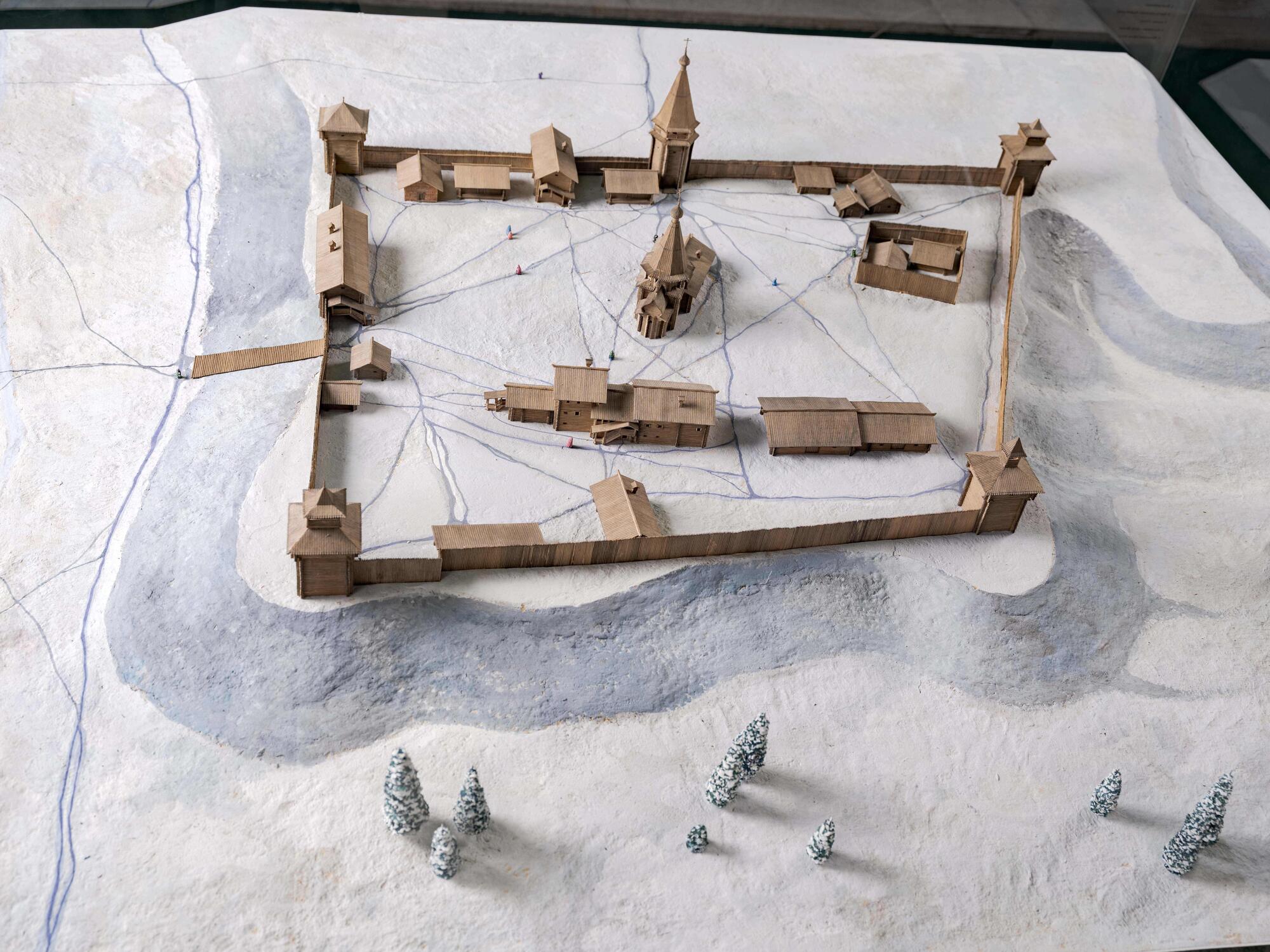This is a model of the Krasnoyarsk Ostrog, where the history of the city of Krasnoyarsk began. An ostrog is a Russian wooden fortress made of planed logs. Ostrogs appeared in the 9th century to provide defense against nomads. The first ostrog fortress on the Yenisey was Novaya Mangazeya, founded in 1607.
From the upper reaches of the Yenisey, the Russian territories were constantly threatened by numerous nomadic tribes: the Arins, the Kachins and the Kyrgyz, who were backed by the Mongols. To create an indestructible fortress, the first Yenisey voivode Yakov Khripunov organized an expedition to search for a location on the Middle Yenisey in 1624. It was led by Andrey Dubensky, a distant relative of the voivode, who became the founder of the future city. 303 people traveled with him.
Having chosen a place for the future town, Dubensky wrote to Tsar Mikhail Romanov in Moscow: “The place is good, high and beautiful. It is possible to build a fortress on that place”. The site chosen for the construction of the fortress was on a high pointed promontory — strelka — at the confluence of the Kacha River into the Yenisey. This ideally met the traditional requirements for the location of military fortresses.
The first thing Dubensky’s detachment did was hastily erect a “plank town”, the materials for which were their plank-built boats. The timber for the construction of the ostrog was obtained in a remote area, two-three days’ journey up the river. The ostrog was built in less than two weeks in August 1628.
The wooden Krasnoyarsk fortress had two gates; the guard towers were insulated with moss, and the floors between storeys were covered with clay and earth. The fortress was heated with stoves venting inside. It was surrounded by palisade — the simplest and cheapest type of walls, which could be constructed quickly.
The roofs of the towers were covered with shingle — thin boards, and the fortress itself was fortified with ditches and “chesnok” — picket fence. The first fortress prison was a “three-sazhen hut”, and the voivode’s courtyard consisted of several buildings.
Having built the ostrog, the people petitioned for
permission to erect “a church for three altars” inside it and to send “church
equipment” — icons, books, bells and everything necessary for divine service.
The first Krasnoyarsk church was consecrated to the feast of the
Transfiguration of the Lord, on the day of which the Krasnoyarsk ostrog was
founded.





